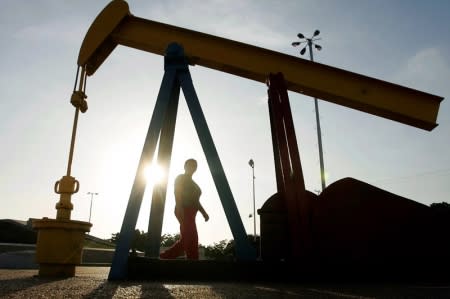Oil Prices Fall On Concerns Over U.S. Output

Investing.com - Oil prices were down on Tuesday morning in Asia amid continued concerns over rising U.S. output and tight supply from the Organization of the Petroleum Exporting Countries (OPEC).
Crude Oil WTI Futures for April delivery were trading at $61.20 a barrel in Asia at 10:15pm ET, down 0.26%. Brent Oil Futures for May delivery, traded in London, were down 0.23% at $64.80 per barrel.
Speculators cut bets on oil, suggesting more selling could be seen. This has reduced some of the enthusiasm for oil, with investors weighing increased U.S. supply against the likelihood that OPEC will maintain production cuts that have been in effect for more than a year. Investors’ bullish wagers on U.S. crude oil fell last week for the first time in three weeks.
OPEC has been reducing output by around 1.2 million barrels per day (bpd) since January 2017. However, the U.S. has simply filled the supply gap created by OPEC producers by ramping up production. This has posed a challenge for OPEC in propping up prices.
On Sunday, Iranian oil minister Bijan Zanganeh said OPEC could agree in June to begin easing current production curbs in 2019.
Output from the U.S. has already risen by 23 percent since mid-2016 to 10.37 million bpd. It has already surpassed top exporter Saudi Arabia, and by 2019 is expected to surpass top producer Russia, which pumps out nearly 11 million bpd.
The increase in rig count in the U.S. also points to more output to come in the future. The U.S. now has close to 800 active rigs, compared to just 616 a year ago.
Oil markets continued to flip back and forth over the past weeks due to excless supply, increasing U.S. production and soaring global demand.
Demand from Asia, particularly China, will continue to support prices.
Related Articles
Oil prices fall on relentless rise in U.S. crude output
Trump spoke with Canada's Trudeau about tariffs, NAFTA talks: White House
Crude Settles Sharply Lower Amid Renewed Fears Over Growing Shale Output

 Yahoo Finance
Yahoo Finance 